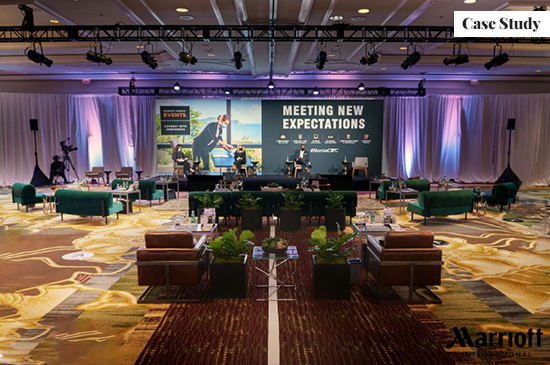Much of the backlash against event safety protocols has been rooted in the question of rights and personal choice. Calls for greater freedom have been met with reminders that fellow attendees and event staff have the right to safety. On the other end of the spectrum, there are prospective attendees who may feel reluctant to attend events in person for fear that too many safety factors lie beyond their control.
Is it possible to give attendees some choice over their event experience in a way that can actually enhance safety? And for those who feel most secure participating remotely, is there a way to make them feel like active contributors rather than simply passive viewers?
Marriott’s Connect with Confidence program, developed in partnership with MeetingPlay, has pioneered tech-enabled solutions to address these issues. At a proof-of-concept hybrid event held in early November of last year, Marriott invited several of its key partners in the event industry to experience the Connect with Confidence prototype firsthand. In this article, we review some of the event’s most forward-thinking innovations.
Bringing Attendees Into the Event Planning Process
Unpredictability has been a major contributing factor to the reservations many have about attending in-person events during the pandemic. With this in mind, it is crucial to ensure that prospective attendees are fully briefed on what to expect at an event well before it begins. Knowledge is power — and so is choice.
Marriott International’s Connect with Confidence program was developed with both of these principles in mind. They knew from surveys conducted in advance of the event that more transparency would translate to greater reassurance.
A few weeks before the first Connect with Confidence hybrid event, prospective attendees were invited to visit a microsite where they could learn more about safety procedures and make decisions about their individualized experience.
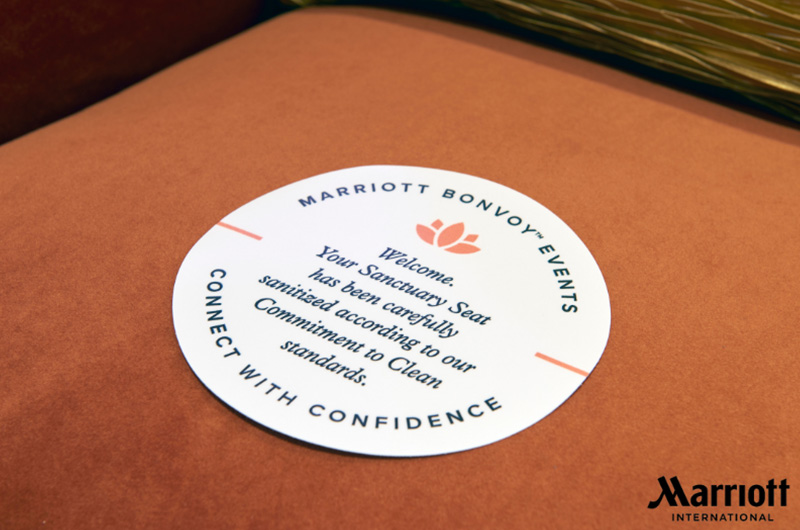
Crucially, this microsite gave both in-person attendees and virtual participants control over a pivotal factor in their experience: They were able to select their location relative to the main stage.
ADVANCED SELECTION OF SEATING AND VIEWING ANGLES
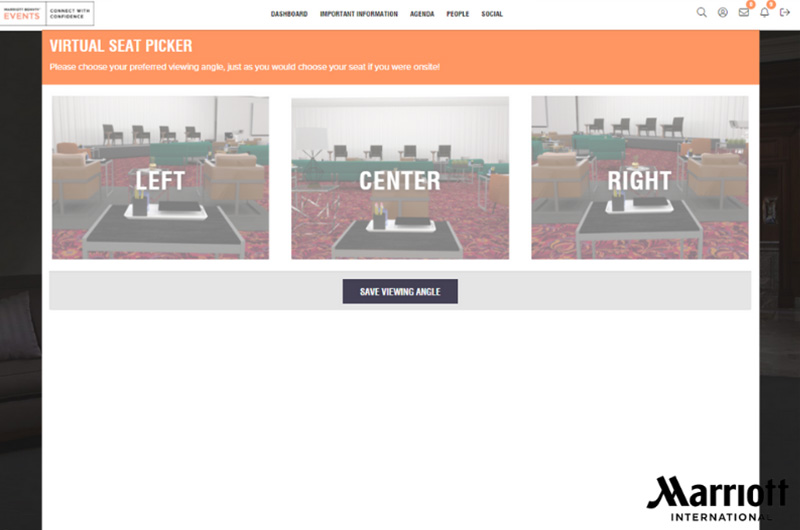
For the event’s 45 in-person attendees, this meant choosing their seat within a realistic 3D rendering of the floorplan. All the seats were set at least six feet apart, but they each had their own advantages. While some safety-conscious attendees preferred seats closer to the exits where air recirculation would be strongest, others seeking a more intimate experience appreciated being able to select a spot right next to the stage. The level of detail provided by the site’s visualization even allowed attendees to decide between the comfort of a cushioned seat versus the adjustability of a lightweight chair.
Recognizing the importance of giving attendees the ability to choose their own “safe place,” Marriott dubbed this system “Sanctuary Seat Selection.”
Similarly, the event’s 200 virtual participants were able to choose their preferred viewing angle. MeetingPlay’s virtual event interface was designed to accommodate the option to switch between a set of different stage angles on a single viewing page.
Keeping Event Safety Rules Clear and Consistent
Among those reluctant to follow safety guidelines, one of the biggest complaints has been a lack of clarity and consistency when it comes to both the rules themselves and their enforcement. Connect with Confidence tackled these issues by leveraging state-of-the-art technology in combination with thoughtful planning.
For ease of use, attendee login details from the pre-event microsite were carried over to the event’s mobile app. Both the app and the physical event layout were designed to make adherence to safety protocols as intuitive as possible for in-person attendees. Expectations were both clear and easy to follow.
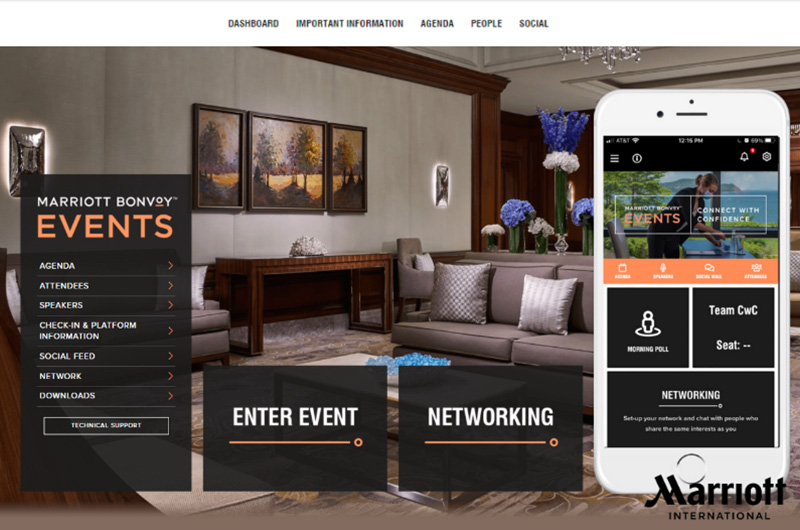
ZONING FOR SAFE AND EASY NAVIGATION
For example, the 3D-rendered floor plan initially used for seat selection was divided into clearly-marked zones. These zones were then mirrored within the physical venue space using large-print floor decals.
Attendees selected their preferred seat before the event even began, and then the app and the venue layout provided clear instructions about how to reach their chosen destination. Single points of entry and exit further streamlined the flow of traffic, in this way minimizing transmission risk by avoiding unnecessary close contact.
Attendees were empowered to find their way without having to ask for directions from fellow participants or event staff. They knew where they were supposed to be, and how they were supposed to get there.
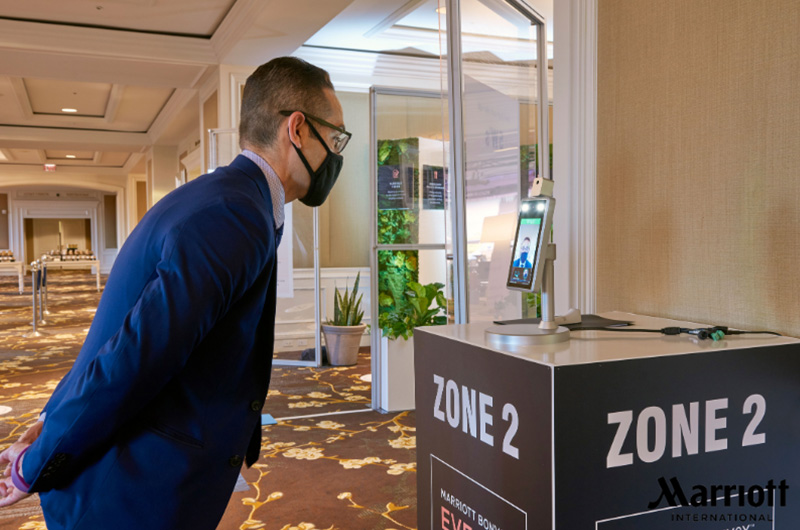
TRULY CONTACTLESS CHECK-IN FOR CONSISTENCY
The event’s contactless check-in and health-screening process also helped to prevent even momentary disruptions in social distancing and mask wearing rules.
Facial recognition software has long been used to facilitate contactless registrations, but it presents one obvious problem in the era of Covid-19: Most facial recognition software requires the removal of masks to work. By contrast, the new Connect with Confidence check-in system designed by MeetingPlay will not only work when attendees are wearing a mask — it will remind them to put one on if their faces are bare.
The device used for the check-in process was also able to take each attendee’s temperature, in this way removing the need for event staff to perform this health-screening role.
GIVING CHOICE WHILE MEETING MINIMUM STANDARDS
As much as advanced technology helps, sometimes thoughtful planning can go just as far. And part of this involves creating an event design that doesn’t contradict the organizer’s own safety rules.
In the interest of giving attendees more choice, some event planners have implemented a color-coded bracelet system whereby attendees can dictate their own social-distancing preferences. The problem with this approach is that its green bracelet often sets a minimum standard — including hugs and handshakes — that is clearly inconsistent with social distancing rules that require attendees to maintain 6 feet of distance.
At Connect with Confidence, however, they used a similar bracelet system to tilt the scale in the opposite direction. Red bracelets signalled that attendees wanted to maintain more than 6 feet of distance, while green ones indicated that brief elbow bumps were allowed.
Similarly, while attendees were given the option to sit at tables for anywhere from one to four people at lunch, all of the seats were spaced 6 feet apart.
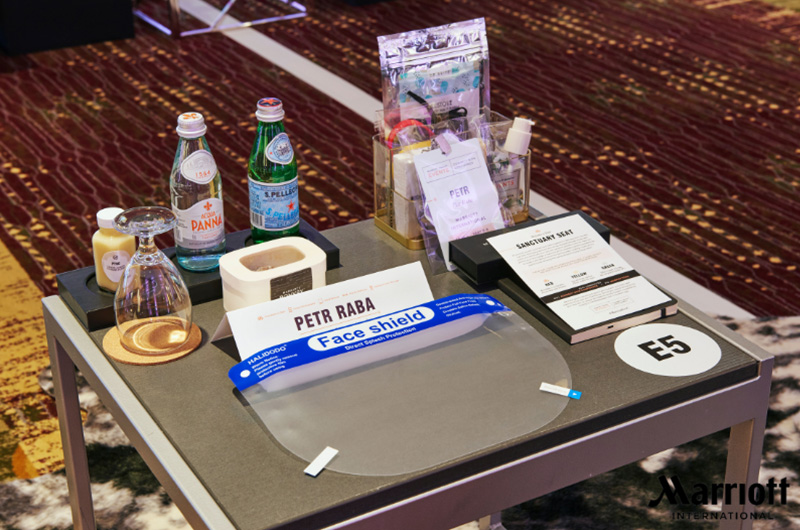
Enabling Active Virtual Participation
The need to provide attendees with choice extends beyond the in-person experience. It goes without saying that a variety of virtual engagement features are equally integral to the success of any hybrid event.
When they work well, these features allow attendees to participate actively even when they are tuning in remotely. This in turn translates to greater choice: Attending in person is no longer the only option for those who want to take an active role in event activities. Further, it gives in-person attendees one more means for interacting with other participants — both those onsite and those connecting from home.
KEY FEATURES FOR VIRTUAL ENGAGEMENT
Across both audiences, 90 percent of Connect with Confidence participants reported that engagement features in the virtual platform and mobile app increased their overall enjoyment of the event. These features included:
- Networking
- Q&A
- Gamification
- Live polls and surveys
- Virtual Photo Booth
Some might question the appeal of digital engagement features if the option of face-to-face interaction is available. But let’s remember that mobile phones have long held such a strong pull that pre-pandemic etiquette often called for a no-phone rule at sit-down dinners. Digital engagement features can be very compelling if they’re designed well.
For example, the Connect with Confidence virtual platform included a photo booth where remote participants could take selfies. In turn, images from the photo booth automatically appeared on the mobile app, allowing in-person attendees to feel more connected to virtual participants.
EMPOWERING REMOTE ATTENDEES TO PARTICIPATE ACTIVELY
Connect with Confidence used two other strategies to enable active participation from remote attendees: an in-person moderator to speak on their behalf, and an innovative approach to virtual F&B engagement.
The moderator gave remote participants the opportunity to contribute to in-person discussions and Q&A sessions. Beyond posing questions from the virtual audience, the moderator monitored the online chat group to gauge attendee sentiment and communicate the key takeaways in real-time.
Connect with Confidence also wanted remote participants to share in the experience of choosing a prepared meal from a menu. In addition, the event organizers provided virtual participants with complimentary Uber Eats gift cards. Since Uber Eats allows for precise timing of deliveries, participants could plan their meals to correspond with the in-person lunch break.
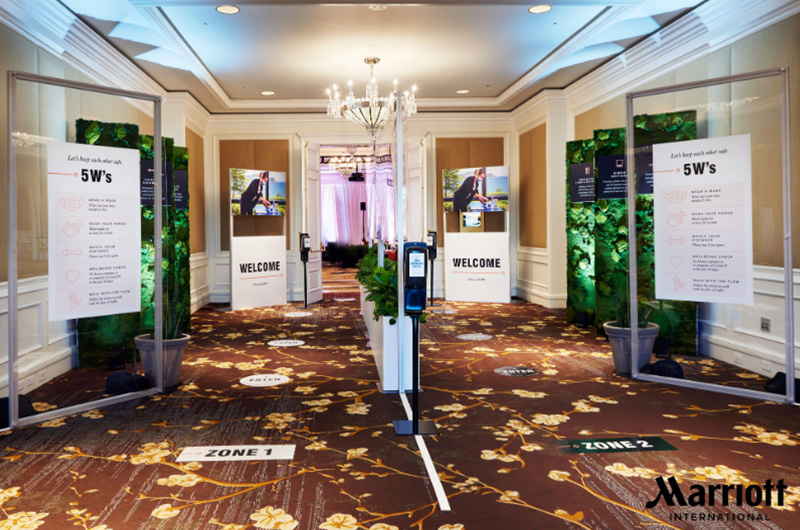
Connect With Confidence Checklist
Following the model put forward by Marriott and MeetingPlay, event organizers can empower attendees in the following ways:
- Share comprehensive information about safety protocols in advance
- Allow in-person attendees to select their seat positions
- Allow virtual attendees to choose their viewing angle for live-stream footage
- Divide the event space into clearly-marked zones for ease of navigation
- Enable a contactless check-in process
- Use facial recognition software that accommodates mask wearing
- Use check-in devices to screen attendees for fevers
- Enable attendees who want to signal stricter, not looser, social distancing preferences
- Provide a variety of virtual engagement tools
- Use a moderator to facilitate active participation from remote attendees
- Incorporate tangible experiences, like meal deliveries, into the virtual experience
IN CONCLUSION
The pandemic’s safety requirements may make it more difficult than ever to give attendees control over their own event journeys. With that said, the increased integration between in-person experiences and tech-enabled engagement provide a whole new set of opportunities for innovation.
To learn more about the Connect with Confidence hybrid event model — as well as the Marriott’s Commitment to Clean program — event organizers are invited to participate in a series of upcoming Learning Labs. Beyond the highlights covered in this article, participants will learn about a series of other health and safety measures including rapid testing and tech-enabled monitoring of social distancing compliance.
